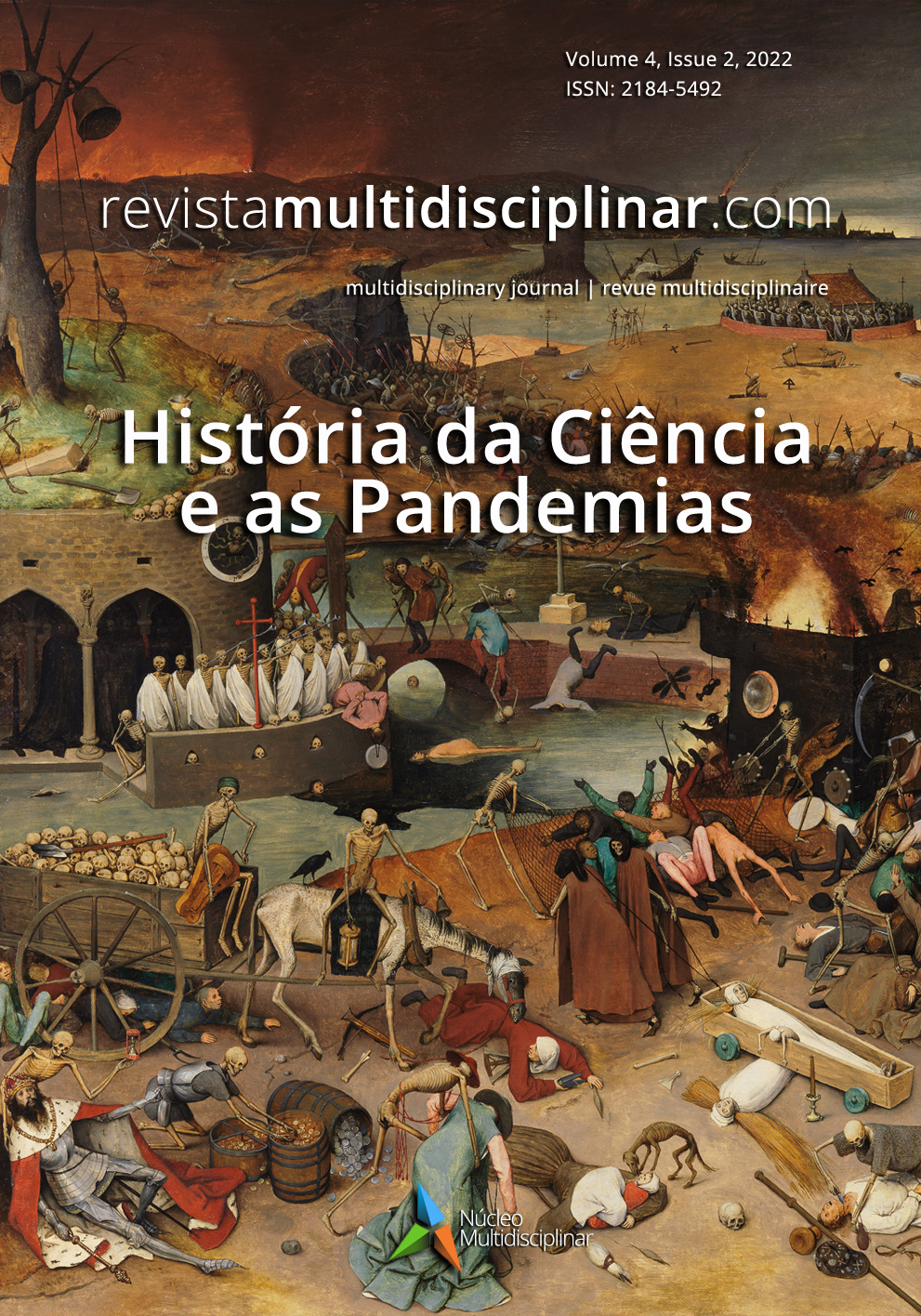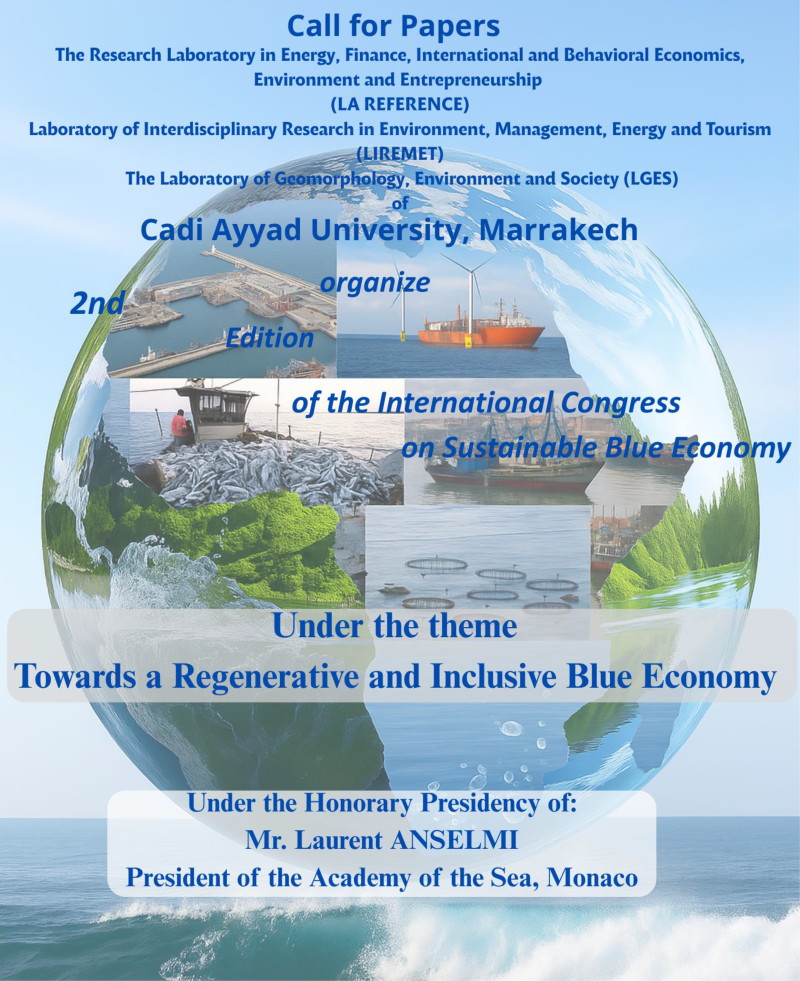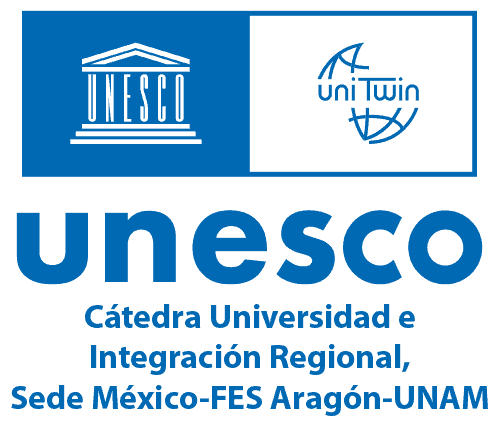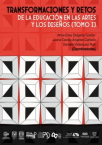Química e Saúde Pública
Elementos da História de uma relação fundamental
DOI:
https://doi.org/10.23882/rmd.22087Palavras-chave:
Contribuições Químicas, Saúde Pública, Alimentação, Higiene, MedicamentosResumo
A química teve, a partir do final do século XVIII, um papel central, que se mantém na atualidade, na saúde pública e no bem-estar da humanidade. A sua maior contribuição é na segurança alimentar, que contribuiu para salvar as vidas de cerca de um terço da população humana. O tratamento da água de consumo com cloro contribuiu para salvar da morte prematura quase duzentos milhões de pessoas. Doenças como a febre tifoide, que mataram reis, como D. Pedro V, e a cólera, são hoje essencialmente memórias. Os antibióticos contribuíram para quase eliminar a sífilis e outras infeções. A tuberculose e a malária quase desapareceram na Europa, em boa parte devido à química. Também a assepsia, a anestesia e a segurança das transfusões de sangue e das vacinas devem muito a contribuições químicas. Atualmente, estamos a viver uma situação de pandemia global, mas devido, também à ciência, podemos enfrentar os problemas com esperança. O principal objetivo do presente trabalho é fazer uma revisão histórica das contribuições químicas para a saúde pública e bem-estar, algo que parecendo trivial, raramente é compreendido em toda a sua extensão.
Referências
American Chemical Society (2022). Chemistry in Coronavirus Research: A Free to Read Collection from the American Chemical Society. https://pubs.acs.org/page/vi/chemistry_coronavirus_research
Almeida, M. A. P. (2014). As epidemias nas notícias em Portugal: cólera, peste, tifo, gripe e varíola, 1854-1918, História, Ciências, Saúde – Manguinhos, 21, 687-708. http://dx.doi.org/10.1590/S0104-59702014000200012
Ansah, J. P., Matchar, D. B., Shao Wei, S. L., Low J. G., Pourghaderi, A. R., Siddiqui, F. j., et al. (2021). The effectiveness of public health interventions against COVID-19: Lessons from the Singapore experience, PLoS ONE 16, e0248742. https://doi.org/10.1371/journal.pone.0248742
Aydon, C. (2010). Breve história da Humanidade. Lisboa: Gradiva.
BASTOS, C. (org.) (2011). Clínica, arte e sociedade: a sífilis no Hospital do Desterro e na saúde pública. Imprensa de Ciências Sociais, Lisboa.
BBC (2020, dezembro 8). First person to get COVID vaccine is happy to inspire others. https://bbc.in/3HXBrxG
Bell, M. L., Zanobetti, A., & Dominici, F. (2014). Who is More Affected by Ozone Pollution? A Systematic Review and Meta-Analysis, American Journal of Epidemiology. 180(1), 15-28. https://doi.org/10.1093/aje/kwu115
Cinar, F., Ekinci, G. (2022). Investigation of the Effect of Comorbidity on Mortality in Patients with COVID-19: A Systematic Review and Meta-Analysis. Biointerface Research in Applied Chemistry, 12(4), 5579-5590. https://doi.org/10.33263/BRIAC124.55795590
CHRISTENSEN, Jen (2021, novembro 25). Reinfection from COVID-19 is rare, severe disease is even rarer, a study of people in Qatar finds. CNN. https://cnn.it/3BmWHdJ
Crider, Y., Sultana, S., Unicomb, L., Davis, J., Luby, S. P., & Pickering, A. J. (2018). Can you taste it? Taste detection and acceptability thresholds for chlorine residual in drinking water in Dhaka, Bangladesh. Science of the Total Environment, 613–614, 840–846. https://doi.org/10.1016/j.scitotenv.2017.09.135
Diário de Lisboa: Folha oficial do Governo Portuguez (1862, fevereiro 22). Diário de Lisboa, pp. 557-562.
ECDPC (2021, novembro 25). WHO/ECDC: Nearly half a million lives saved by COVID-19 vaccination in less than a year. European Centre for Disease Prevention and Control. https://bit.ly/3HTkuUR
EMA (2021a). Public-health advice during COVID-19 pandemic. European Medicines Agency. https://bit.ly/34QKOjT
EMA (2021b). COVID-19 vaccines. European Medicines Agency. https://bit.ly/3oQBq6S
EMA (2021c). EMA issues advice on use of Paxlovid (PF-07321332 and ritonavir) for the treatment of COVID-19: rolling review starts in parallel. European Medicines Agency. https://bit.ly/3oRtbHN
EMSLEY, John (2010). A healthy, Wealthy, Sustainable World. RSC Publishing.
Erisman, J., Sutton, M., Galloway, J., Zbigniew K., & Wilfried W. (2008). How a century of ammonia synthesis changed the world. Nature Geosci, 1, 636–639. https://doi.org/10.1038/ngeo325
EAS (2022). EAS Consensus panel answers the questions on statin safety. European Atherosclerosis Society. https://www.eas-society.org/page/statin_safety
FDA (2021a). COVID-19 Vaccines. U.S. Food and Drug Administration. https://bit.ly/3H2EXWh
FDA (2021b). Coronavirus (COVID-19) Update: FDA Authorizes First Oral Antiviral for Treatment of COVID-19. U.S. Food and Drug Administration. https://bit.ly/3rOBaY4
FDA (2021c). Novel Drug Approvals for 2021. U.S. Food and Drug Administration. https://bit.ly/3I2KbSQ
Felix, C. B., Ubando, A. T., Chen, W. H., Goodarzi, V., Ashokkumar, V. (2022). COVID-19 and industrial waste mitigation via thermochemical technologies towards a circular economy: A state-of-the-art review. Journal of Hazardous Materials, 423B, 127215. https://doi.org/10.1016/j.jhazmat.2021.127215
Fidock, D. A., Rosenthal, P. J., Croft, S. L., Brun, R., & Nwaka, S. (2004). Antimalarial drug discovery: efficacy models for compound screening. Nature reviews Drug discovery, 3(6), 509-520. https://doi.org/10.1038/nrd1416
Forni, G., & Mantovani, A. (2021). COVID-19 vaccines: where we stand and challenges ahead. on behalf of the COVID-19 Commission of Accademia Nazionale dei Lincei, Rome. Cell Death Differ, 28, 626–639. https://doi.org/10.1038/s41418-020-00720-9
Goodfellow, K. (2020, abril 1). Chlorhexidine - the good, the bad, and the ugly. RDH. https://bit.ly/3GIW9Qk
Hayden, D. (2004). Pox: genius, madness, and the mysteries of syphilis. Perseus Books.
Keinan, E. (2013). Gloomy Forecast for the Prophets of Apocalypse and Bright Forecast for Chemists, Angewandte Chemie, 52(10), 2667–2672. https://doi.org/10.1002/anie.201209383
Kumar, A., Singh, P., Raizada, P., & Hussain, C. M. (2022). Impact of COVID-19 on greenhouse gases emissions: A critical review, Sci. Total Env. 806, 150349. https://doi.org/10.1016/j.scitotenv.2021.150349
LANDES, David S. (2001). A riqueza e a pobreza das nações. Gradiva.
LASZLO, Pierre (1996). A nova química. Edições Piaget.
Li, M. T., Song, G., Liu, R. P., Huang, X., & Liu, H. (2022). Inactivation and risk control of pathogenic microorganisms in municipal sludge treatment: A review. Frontiers of Environmental Science & Engineering, 16, 70. https://doi.org/10.1007/s11783-021-1504-5
Liu H-y., Han Y., Chen X-s., Bai L., Guo S-p., Li L., Wu, P. & Yin, Y-p. (2017) Comparison of efficacy of treatments for early syphilis: A systematic review and network meta-analysis of randomized controlled trials and observational studies. PLoS ONE 12(6): e0180001. https://doi.org/10.1371/journal.pone.0180001
LOMBORG, Bjorn (2001). The Skeptical Environmentalist: Measuring the Real State of the World. New York: Cambridge University Press.
Majori, G. (2012). Short History of Malaria and its Eradication in Italy Mediterranean Journal of Hematology and Infectious Diseases, 4(1), p. e2012016. https://doi.org/10.4084/MJHID.2012.016
Martins, R. A., Martins, L. A. P., Ferreira, R. R., & Toledo, M. C. F. (1997). Contágio: história da prevenção das doenças transmissíveis. São Paulo: Moderna. http://www.ghtc.usp.br/Contagio
Mattoso, J. (2015). Identificação de um país. Temas e Debates.
Mattoso, J. (2020). A história Contemplativa. Temas e Debates.
Melo, D. (2009). A gripe pneumónica no Portugal Republicano: o olhar dos escritores e fotógrafos. Em J. Sobral, L. Lima, P. Castro, P. S. Sousa (Eds). A Pandemia esquecida – olhares comparados sobre a pneumónica 1918-1919. Lisboa: Imprensa de Ciências Sociais.
Meyer, J. S., Quenzer, Linda F. (2005). Psychopharmacology: drugs, the brain, and behavior. Sunderland: Sinauer.
Moabelo, K. L., Martin, D. R., Fadaka, A. O., Sibuyi, N. R. S., Meyer, M., & Madiehe, A. M. (2021). Nanotechnology-Based Strategies for Effective and Rapid Detection of SARS-CoV-2. Materials, 14(24), 7851. https://doi.org/10.3390/ma14247851
Morais, J. A. D. (2011). Surtos epidémicos ocorridos em Portugal na primeira metade do século XX: abordagem histórico-epidemiológica. I – Peste bubónica. Medicina Interna, 18, 259-266. https://bit.ly/3uRx0Ri
Morais, J. A. D. (2012a). Surtos epidémicos ocorridos em Portugal na primeira metade do século XX: abordagem histórico-epidemiológica. II – Varíola, Medicina Interna, 19, 43-50. https://bit.ly/3HPYg6n
Morais, J. A. D. (2012b). Surtos epidémicos ocorridos em Portugal na primeira metade do século XX: abordagem histórico-epidemiológica. III – Gripe pneumónica, Medicina Interna, 19, 97-104. https://bit.ly/3LwCg2t
Newman, D. J., & Cragg, G. M. (2016). Natural Products as Sources of New Drugs from 1981 to 2014, Journal of Natural Products, 79(3), 629–661. https://doi.org/10.1021/acs.jnatprod.5b01055
Ritchie, H., Mathieu, E., Rodés-Guirao, L., Appel, C., Giattino, C., Ortiz-Ospina, E., Hasell, J., Macdonald, B., Beltekian, D., & Roser, M. (2021). Coronavirus Pandemic (COVID-19). OurWorldInData.org. https://bit.ly/3sJGCdQ
Pinker, S. (2018). Enlightment Now: The Case for reason. Science, Humanism, and Progress. Great Britain: Allen Lane.
Plotkin, S. (2014). History of vaccination. PNAS, Proceedings of the National Academy of Sciences, 111(34), 12283–12287. https://doi.org/10.1073/pnas.1400472111
Porto, V. A., & Porto, R. S. (2022). In silico Studies of Novel Synthetic Compounds as Potential Drugs to Inhibit Coronavirus (SARS-CoV-2): A Systematic Review, Biointerface Research in Applied Chemistry, 12(4), 4293-4306. https://doi.org/10.33263/BRIAC124.42934306
Robinson, E., Jones, A., Lesser, I., & Daly, M. (2021). International estimates of intended uptake and refusal of COVID-19 vaccines: A rapid systematic review and meta-analysis of large nationally representative samples. Vaccine, 39(15), 2024-2034. https://doi.org/10.1016/j.vaccine.2021.02.005
Rodrigues, S. (2014). Jardins de cristais - Química e literatura. Lisboa: Gradiva, 2014.
Rodrigues, S. P. J. (2016a). Que Química! Entre o fascínio com o pessimismo e a hesitação perante o optimismo. Química – Bul. Soc. Port. Quim., 140, 27-35.
Rodrigues, S. P. J. (2016b). Mal-entendidos, preconceitos e mitos sobre química na sociedade contemporânea. In Oliveira, M., Santos, O., Carvalho, N., Lameiras, E., Castro, J. (Coord.) Atas do II Congresso Internacional Educação, Ambiente e Desenvolvimento. (pp. 317-330). Leiria: OIKOS. E-book ISBN 978-989-99054-2-9.
Rodrigues, S. P. J. (2018). Acerca das contribuições da química para os objectivos de desenvolvimento sustentável das Nações Unidas. In Santos, O., Oliveira, M., Carvalho, N. (Coord.) Atas do III Congresso Internacional Educação, Ambiente e Desenvolvimento. (pp. 338-351). Leiria: OIKOS. E-book SBN 978-989-99054-4-3.
Rodrigues, Sérgio P. J. (2019). Moléculas psicotrópicas e literatura: uma visão química. Em História interdisciplinar da loucura, psiquiatria e saúde mental IX. M. L. Pereira, J. R. Pita, (Coords.) Coimbra: Sociedade de História Interdisciplinar da Saúde / Centro de Estudos Interdisciplinares do Século XX da Universidade de Coimbra - CEIS20 (Grupo de História e Sociologia da Ciência e da Tecnologia).
Rodrigues, Sérgio P. J. (2020). A Química ao serviço da vida e prisioneira da guerra, em I. Abrantes, P. M. Callapez, G. P. Correia, E. Gomes, B. Lopes, F. C. Lopes, E. Pires, & A. Rola (Eds.), Uma visão holística da Terra e do Espaço nas suas vertentes naturais e humanas. Homenagem à Professora Celeste Romualdo Gomes. Coimbra: CITEUC, pp. 229-242.
Rosling, H., Rosling, O., Ronnlund, A. R. (2018). Factfulness. Lisboa: Círculo de Leitores.
Rosling, H., & Härgesteam, F. (2021). Como aprendi a compreeder o mundo. Lisboa: Círculo de Leitores.
Sallam, M. (2021). COVID-19 Vaccine Hesitancy Worldwide: A Concise Systematic Review of Vaccine Acceptance Rates. Vaccines, 9(2), 160. https://doi.org/10.3390/vaccines9020160
Science Heroes (2021). Who saved the most lives in history?! scienceheroes.com. https://www.scienceheroes.com/
Snowden, F. M. (2020). Epidemias e sociedade: da Peste Negra ao presente. Edições 70.
Van Zanden, J. L., Baten, J., d’Ercole, M. M., Rijpma, A., Smith, C., & Timmer M. (eds.). (2014). How Was Life?: Global Well-being since 1820. OECD Publishing.
Vernon, G. (2019). Syphilis and Salvarsan. British Journal of General Practice, 69(682), 246. https://doi.org/10.3399/bjgp19X702533
Vieira, I. C. (2015). Conhecer, tratar e combater a “peste branca”. Lisboa: Edições Afrontamento.
Wang J., Kaperak C., Sato T., & Sakuraba, A. (2021). COVID-19 reinfection: a rapid systematic review of case reports and case series. Journal of Investigative Medicine, 69, 1253-1255. http://dx.doi.org/10.1136/jim-2021-001853
WHO (2021a) Considerations for implementing and adjusting public health and social measures in the context of COVID-19. World Health Organization. https://bit.ly/33kek0X
WHO (2021b). WHO Coronavirus (COVID-19) Dashboard. World Health Organization. https://COVID19.who.int/
Woodward, B., Shurkin, J. N., & Gordon, D. (2009). Scientists greater than Einstein: the biggest lifesavers of the twentieth century. Fesno: Quill Driver Books.
WORLDOMETER (2021). COVID-19 Coronavirus Pandemic. Worldometer. https://www.worldometers.info/coronavirus/
Publicado
Como Citar
Edição
Secção
Licença
Direitos de Autor (c) 2022 Sérgio P. J. Rodrigues

Este trabalho encontra-se publicado com a Creative Commons Atribuição-NãoComercial 4.0.









